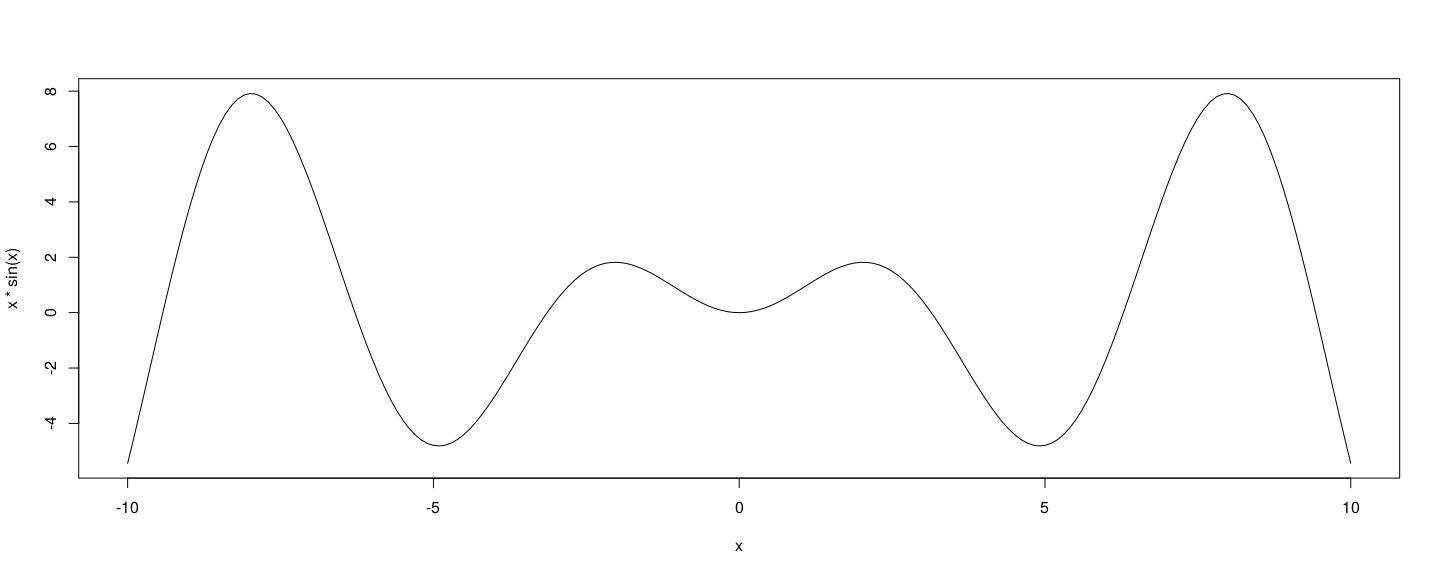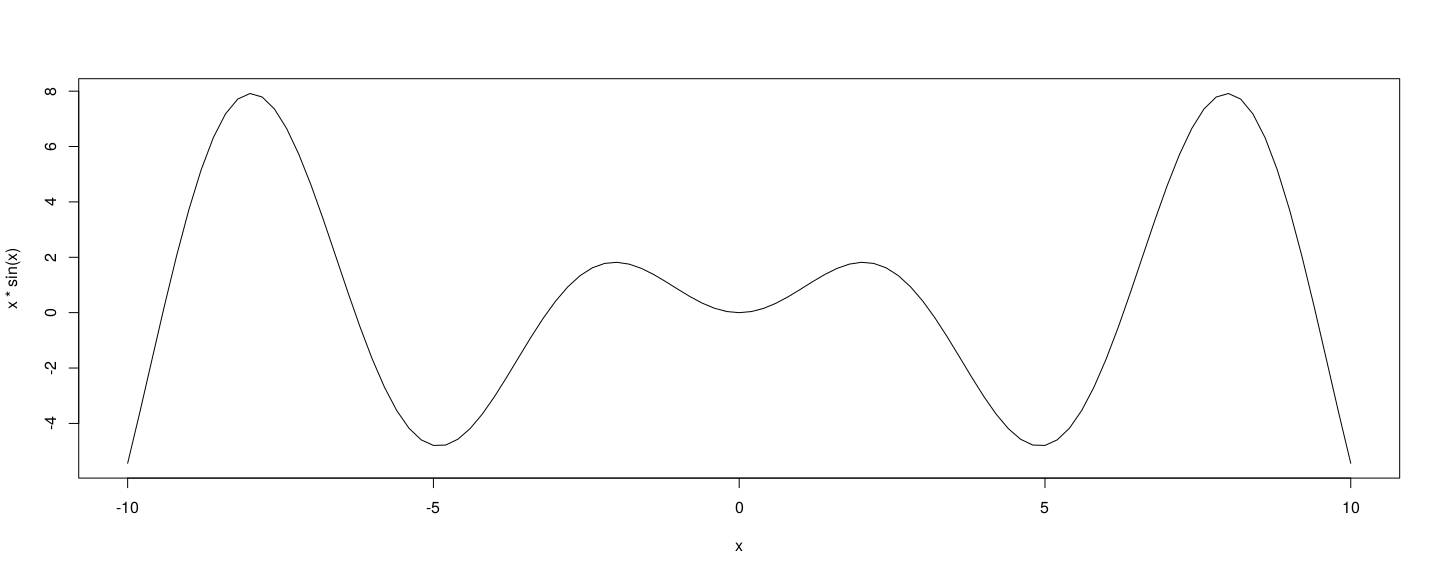class: center, middle # Non-Standard Evaluation - 1 ## Introductory Computer Programming ### Deepayan Sarkar <h1 onclick="document.documentElement.requestFullscreen();" style="cursor: pointer;"> <svg xmlns="http://www.w3.org/2000/svg" width="16" height="16" fill="currentColor" class="bi bi-arrows-fullscreen" viewBox="0 0 16 16"> <path fill-rule="evenodd" d="M5.828 10.172a.5.5 0 0 0-.707 0l-4.096 4.096V11.5a.5.5 0 0 0-1 0v3.975a.5.5 0 0 0 .5.5H4.5a.5.5 0 0 0 0-1H1.732l4.096-4.096a.5.5 0 0 0 0-.707zm4.344 0a.5.5 0 0 1 .707 0l4.096 4.096V11.5a.5.5 0 1 1 1 0v3.975a.5.5 0 0 1-.5.5H11.5a.5.5 0 0 1 0-1h2.768l-4.096-4.096a.5.5 0 0 1 0-.707zm0-4.344a.5.5 0 0 0 .707 0l4.096-4.096V4.5a.5.5 0 1 0 1 0V.525a.5.5 0 0 0-.5-.5H11.5a.5.5 0 0 0 0 1h2.768l-4.096 4.096a.5.5 0 0 0 0 .707zm-4.344 0a.5.5 0 0 1-.707 0L1.025 1.732V4.5a.5.5 0 0 1-1 0V.525a.5.5 0 0 1 .5-.5H4.5a.5.5 0 0 1 0 1H1.732l4.096 4.096a.5.5 0 0 1 0 .707z"/> </svg> </h1> --- # R is not C * R syntax is superficially similar to C * This makes it easy to start using R if you are already familiar with C * However, the internals of how R works is very different (even apart from vectorized arithmetic) * We will try to go over some of these differences and highlight R "good practices" --- <!-- # Some important features of R * Lazy evaluation * Working with "expressions" * Non-standard evaluation * Functions can be arguments of other functions * The `*apply` family of functions * Working with matrices * Basic linear models --> # Topics we will cover today * Lazy evaluation * Working with "expressions" * Non-standard evaluation <!-- # Example: the probability problem discussed in class ```r probdiv1 <- function(n, nrep) { count <- 0 for (i in seq_len(nrep)) { # or i in 1:nrep s <- sort(sample(n, 2)) if (s[2] %% s[1] == 0) count <- count + 1 } return (count / nrep) } probdiv3 <- function(n) { a <- seq_len(floor(n/2)) counts <- floor(n / a) - 1 return (sum(counts) / choose(n, 2)) } ``` --> --- layout: true # Lazy evaluation --- * Arguments passed as function arguments are _not_ evaluated until they are used * This might seem like a very minor difference * This feature allows for some interesting behaviour in R --- ```r rchoose1 <- function(u, a, b) { if (u < 0.5) a else b } set.seed(20210101) # makes subsequent "random" numbers reproducible rchoose1(runif(1), sqrt(2), sqrt(-2)) ``` ``` [1] 1.414214 ``` ```r rchoose1(0.25, sqrt(2), sqrt(-2)) ``` ``` [1] 1.414214 ``` ```r rchoose1(0.75, sqrt(2), sqrt(-2)) ``` ``` Warning in sqrt(-2): NaNs produced ``` ``` [1] NaN ``` --- * Compare with a similar function written in C++ ```cpp #include <Rcpp.h> double cchoose1(double u, double a, double b) { if (u < 0.5) return a; else return b; } double wsqrt(double x) { if (x < 0) Rcpp::warning("negative input: NaN produced"); return sqrt(x); } // [[Rcpp::export]] double cchooseSqrt(double u, double a, double b) { return cchoose1(u, wsqrt(a), wsqrt(b)); } ``` --- ```r set.seed(20210101) cchooseSqrt(runif(1), 2, -2) ``` ``` Warning in cchooseSqrt(runif(1), 2, -2): negative input: NaN produced ``` ``` [1] 1.414214 ``` ```r cchooseSqrt(0.25, 2, -2) ``` ``` Warning in cchooseSqrt(0.25, 2, -2): negative input: NaN produced ``` ``` [1] 1.414214 ``` ```r cchooseSqrt(0.75, 2, -2) ``` ``` Warning in cchooseSqrt(0.75, 2, -2): negative input: NaN produced ``` ``` [1] NaN ``` --- layout: true # Quoted expressions and evaluation --- * Remember that R works by evaluating "expressions" typed at the prompt * Consider the following expression: ```r a < b ``` ``` Error in eval(expr, envir, enclos): object 'a' not found ``` * This fails because the variables `a` and `b` used in the expression are not defined --- * It is possible to store an expression without _evaluating_ it in R * This can be done is several ways; for example ```r e1 <- quote(a < b) e2 <- expression(a < b) ``` --- * We can explore the nature of these objects in the usual ways ```r class(e1) ``` ``` [1] "call" ``` ```r length(e1) ``` ``` [1] 3 ``` ```r str(e1) ``` ``` language a < b ``` --- * `expression()` essentially allows a multiple quoted expressions to be stored (as a vector) ```r class(e2) ``` ``` [1] "expression" ``` ```r length(e2) ``` ``` [1] 1 ``` ```r length(e2[[1]]) ``` ``` [1] 3 ``` ```r str(e2[[1]]) ``` ``` language a < b ``` --- * Why is this useful? * Among other things, expressions can be evaluated using the `eval()` function ```r x <- 10 eval(quote(sqrt(x))) ``` ``` [1] 3.162278 ``` --- * Trying to evaluate `e1` again gives the same error because `a` and `b` are not defined ```r e1 ``` ``` a < b ``` ```r eval(e1) ``` ``` Error in eval(e1): object 'a' not found ``` -- * However, `eval()` has an optional `envir` argument that can be used to provide missing variables ```r d <- list(a = rnorm(10), b = rexp(10)) eval(e1, envir = d) ``` ``` [1] TRUE TRUE TRUE TRUE TRUE FALSE TRUE TRUE TRUE TRUE ``` --- layout: true # Lazy evaluation and `substitute()` --- * Lazy evaluation allows a special trick * An R function can quote an argument without evaluating it * This is done using the function `substitute()` ```r getExpression <- function(x) { return(substitute(x)) } getExpression(sqrt(10)) ``` ``` sqrt(10) ``` ```r getExpression(a + b) ``` ``` a + b ``` --- * This can be often quite useful * For example, the following function attaches an attribute storing the call to the result of any evaluation ```r withCall <- function(e) { ans <- eval(e) attr(ans, "call") <- substitute(e) return(ans) } withCall(sqrt(10)) ``` ``` [1] 3.162278 attr(,"call") sqrt(10) ``` ```r withCall(rbind(rnorm(5), rexp(5))) ``` ``` [,1] [,2] [,3] [,4] [,5] [1,] -1.412479 0.3771837 -0.5326313 1.0322354 0.6610746 [2,] 2.578773 0.8482034 0.2733861 0.3399451 3.1885165 attr(,"call") rbind(rnorm(5), rexp(5)) ``` --- * This is how `plot()` can construct nice axis labels ```r x <- seq(-10, 10, length.out = 201) plot(x = x, y = x * sin(x), type = "l") ```  --- * And how `curve()` determines what function to plot ```r curve(x * sin(x), from = -10, to = 10) ```  --- layout: false class: middle, center # Questions? <!-- ```r e1[[1]] ``` ``` `<` ``` ```r e1[[2]] ``` ``` a ``` ```r e1[[3]] ``` ``` b ``` ```r e1[[1]] <- quote(rbind) e1 ``` ``` rbind(a, b) ``` ```r eval(e1, envir = d) ``` ``` [,1] [,2] [,3] [,4] [,5] [,6] [,7] [,8] [,9] a 0.3556914 -0.4913036 -0.6801197 -1.068554 -0.440427551 1.2370412 -1.215399 -0.2744189 1.556999 b 0.8630517 1.1707217 1.0798985 1.101444 0.004995799 0.5066633 1.264804 0.7895531 2.279978 [,10] a -1.243647 b 2.419367 ``` -->